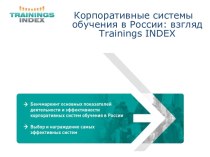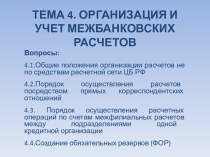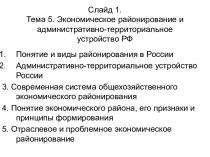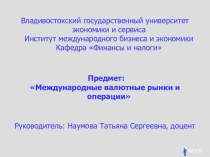Слайд 2
Internal organisation of the firm
Слайд 3
Structure of the company
In any organization, the allocation
of jobs is necessary to ensure that the business
operates as efficiently as possible.
The structure of an organization refers to the way in which its activities are grouped or arranged. It is a hierarchical concept of subordination of entities (employees).
It depend on:
Number and skills of employees
Whether it is in the manufacturing or service sector
Whether it is a local, national or international organization
The type of work with which it is involved
The culture of organisation – reflects creativity, history etc.
Слайд 4
Organisational chart
The structure of the firm is usually
shown on an organisation chart. It usually provides us
with the job titles of employees (or sections) and their relationship with each other.
Major issues in chart:
Where is the responsibilty and authority for decision making
Job titles and roles
Lines of authority (who employee is accountable to and who they are responsible for)
The lines of communication
Слайд 5
Structure
Various forms in practice. There is no right
or wrong structure, provided that it reflect the needs
of company and allows to communicate and work effectively and achieve business objectives.
Businesses that are growing quickly are likely to change the organisational structure regularly.
Levels of hierachy – number of layers within an organisation, with each layer representing a level of authority. The more layers, the longer the chain of command. It may lead to communication problems as lines of communication are streched.
Слайд 6
Span of control vs. work load
Span of control:
the number of subordinates, one job/post holder is responsible
for.
Work load: how much work one employee, department or team have to complete in a given period of time.
Delegation: passing the authority to make specific decisions to somebody further down the organisational hierarchy.
Слайд 7
Adjustment of the structure
Major reasons:
The growth of the
business
Market conditions
Ownership
Customer’s needs
The entrepreneurial culture within company
Слайд 8
Managerial structure
Chairman of the Board – most responsible
for firm’s strategic policies
Compensation Committee – nonemployee directors setting
the remuneration package for management
Chief Executive Officer (CEO) – head of management team
Chief Financial Officer (CFO) – responsible for: accounting, raising capital, evaluation of effectiveness of operation and investment.
Chief Operating Officer (COO) – production and often sales.
Слайд 9
Types of structures
Hierarchical (follow)
Matrix – based around tasks
or projects and involve creation of team that include
required specialists
Entrepreneurial structures – for small business – core team of decision makers is supported by a number of general employees with little or no decision-making power.
Informal
Слайд 11
U-form
One in which the central organization of the
firm (CEO or management board) is responsible both for
the firm’s day-to-day operations and for formulating its business strategy.
Communication relies on the central part.
Often inefficient as problems with bounded rationality – limits in ability to absorb and process information by management.
Слайд 13
M-form
One in which the business is organized into
separate departments, such that responsibility for the day-to-day management
is separated from the formulation of business’s strategic plan.
Medium to large firms
Advantages:
Reduced length of information flows
CEO can concentrate on overall planning
Enhanced level of control – each division may become „mini-firm” competing with other – when introducing properly designed budgeting and controlling procedures
Слайд 14
Flat organisation
One in which technology enables senior managers
to communicate directly with those lower in the organizational
structure. Middle managers are bypassed.
Problems similar as with U-form:
Communication cost (now lower)
Misinterpretation of information or decisions
Managers may focus on their own departmental goals rather than overall goals of the company.
Слайд 15
Mutlinationals
H-form (or holding company) – variation of M-structure.
Parent company holds interest in a number of other
companies or subsidiaries. These subsidiaries can in turn control other companies.
Integrated international enterprise – international company pursues a single business strategy – coordinates activities of various other subsidiaries accross different countries.














































